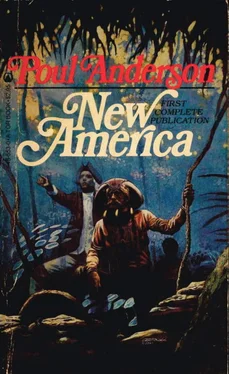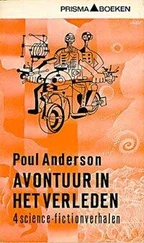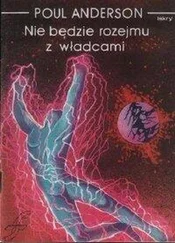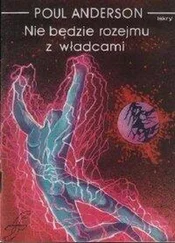For our purposes here, the most interesting trait of a black hole is its apparent violation of a whole series of conservation laws so fundamental to physics that they are well-nigh Holy Writ. Thus many an issue, not long ago considered thoroughly settled, is again up for grabs. The possibility of entering a black hole and coming out “instantly” at the far end of a space warp is being seriously discussed. Granted, astronauts probably couldn’t survive a close approach to such an object. But knowledge of these space warp phenomena and their laws, if they do occur in reality, might well enable us to build machines which—because they don’t employ velocity—can circumvent the c barrier.
Black holes aren’t the sole things which play curious tricks on space and time. An ultra-dense toroid, spinning very rapidly in smoke ring fashion, should theoretically create what is called a Kerr metric space warp, opening a way to hyper-space.
The most breathtaking recent development of relativity that I know of is by F.J. Tipler, a physicist at the University of Maryland. According to his calculations, not just near-instantaneous crossings of space should be possible, but time travel should be! A cylinder of ultra-dense matter, rotating extremely fast (velocity at the circumference greater than 0.5c) produces a region of multiple periodic spacetime. A particle entering this can, depending on its exact track, reach any event in the universe during which the cylinder exists.
The work was accepted for publication in Physical Review , which is about as respectable as science can get. Whether it will survive criticism remains to be seen. But if nothing else, it has probably knocked the foundation out from under the causality argument against faster-than-light travel: by forcing us to rethink our whole concept of causality.
The foregoing ideas lie within the realm of accepted physics, or at least on its debatable borders. Dr. Forward has listed several others which are beyond the frontier… but only barely, and only by date. Closer study could show, in our near future, that one or more of them refer to something real.
For instance, we don’t know what inertia “is.” It seems to be a basic property of matter; but why? Could it be an inductive effect of gravitation, as Mach’s Principle suggests? If so, could we find ways to modify it, and would we then be held back by the increase of mass with velocity?
Could we discover, or produce, negative mass? This would gravitationally repel the usual positive kind. Two equal masses, positive and negative, linked together, would make each other accelerate in a particular direction without any change in momentum or energy. Could they therefore transcend c?
A solution of Einstein’s field equations in five dimensions for charged particles gives an electron velocity of a billion trillion c. What then of a spaceship, if the continuum should turn out to have five rather than four dimensions?
Conventional physics limits the speed of mass-energy. But information is neither; from a physical standpoint, it represents negative entropy. So can information outrun light, perhaps without requiring any medium for its transmission? If you can send information, in principle you can send anything.
Magnificent and invaluable though the structure of relativity is, does it hold the entire truth? There are certain contradictions in its basic assumptions which have never been resolved and perhaps never can be. Or relativity could be just a special case, applying only to local conditions.
Once we are well and truly out into space, we may find the signs of a structure immensely more ample.
These speculations have taken us quite far beyond known science. But they help to show us how little known that science really is, even the parts which have long felt comfortingly, or confiningly, familiar. We can almost certainly reach the stars. Very possibly, we can reach them easily.
If we have the will.
Readers who shudder at sight of an equation can skip this part, though they may like to see the promised table. For different velocities, it gives the values of the factors “tau” and “gamma.” These are simply the inverses of each other. A little explanation of them may be in order.
Suppose we have two observers, A and B, who have constant velocities. We can consider either one as being stationary, the other as moving at velocity v. A will measure the length of a yardstick B carries, in the direction of motion, and the interval between two readings of a clock B carries, as if these quantities were multiplied by tau. For example, if v is 0.9 c, then B’s yardstick is merely 0.44 times as long in A’s eyes as if B were motionless; and an hour, registered on B’s clock, corresponds to merely 0.44 hour on A’s. On the other hand, mass is multiplied by gamma. That is, when B moves at 0.9c, his mass according to A is 2.26 times what it was when B was motionless.
B in turn, observes himself as normal, but A and A’s environs as having suffered exactly the same changes. Both observers are right.
| V |
Tau |
Gamma |
| 0.1c |
0.995 |
1.005 |
| 0.5c |
0.87 |
1.15 |
| 0.7c |
0.72 |
1.39 |
| 0.9c |
0.44 |
2.26 |
| 0.99c |
0.14 |
7.10 |
| 0.9999c |
0.017 |
58.6 |
The formula for tau is (1 - v 2/c 2) ½. where the exponent “½” indicates a square root. Gamma equals one divided by tau, or (1 - v 2/c 2) ½.
As for relativistic acceleration, if this has a constant value a up to midpoint, then a negative (braking) value — a to destination, the time to cover a distance S equals (2c/a) arc cos (1 - aS½2c 2). For long distances, this reduces to (2c/a) ln (aS/c 2) where “ ln ” means “natural logarithm.” The maximum velocity, reached at midpoint, is c [1 - (1 + aS/2c 2) -2]½.
Since this essay first appeared, in 1975, much further thought and study have been going on. The likelihood of the “starbow” has been questioned; so has the practicality of the Bussard ramjet. These matters are still controversial, though. Meanwhile, the idea of a matter-antimatter rocket is looking more hopeful than it formerly did. The whole field of interstellar astronautics remains lively, exciting, and infinitely promising.
But mankind will never see that promise fulfilled unless we, today, continue pioneering in those parts of space that we can already reach.
This is a work of fiction. All the characters and events portrayed in this book are fictional, and any resemblance to real people or incidents is purely coincidental.
NEW AMERICA
Copyright © 1982 by Poul Anderson
All rights reserved, including the right to reproduce this book or portions thereof in any form.
A TOR Book
Published by Tom Doherty Associates, Inc., 8-10 W. 36th St., New York, New York 10018
First TOR printing, December 1982
Second printing, May 1984
ISBN: 0-812-48553-0
Cover art by Tom Kidd
Printed in the United States of America
Acknowledgements: The stories contained herein were first published and are copyright as follows:
“My Own, My Native Land:” Continuum I , copyright© 1974 by Roger Elwood
“Passing the Love of Women:” Continuum II, copyright© 1974 by Roger Elwood
“A Fair Exchange:” Continuum III , copyright© 1974 by Roger Elwood
“To Promote the General Welfare:” Continuum IV copyright© 1975 by Roger Elwood
“The Queen of Air and Darkness:” The Magazine of Fantasy and Science Fiction, copyright ©1971 by Mercury Press, Inc. “Home:” Orbit I, copyright ©1966 by Berkeley Publishing Corporation
Читать дальше











